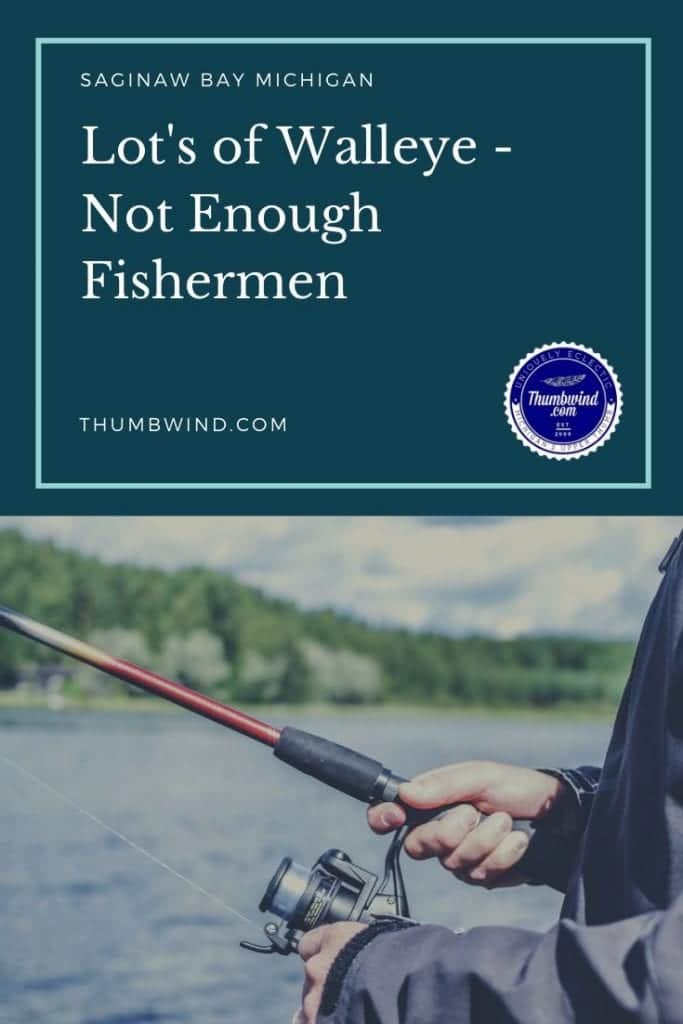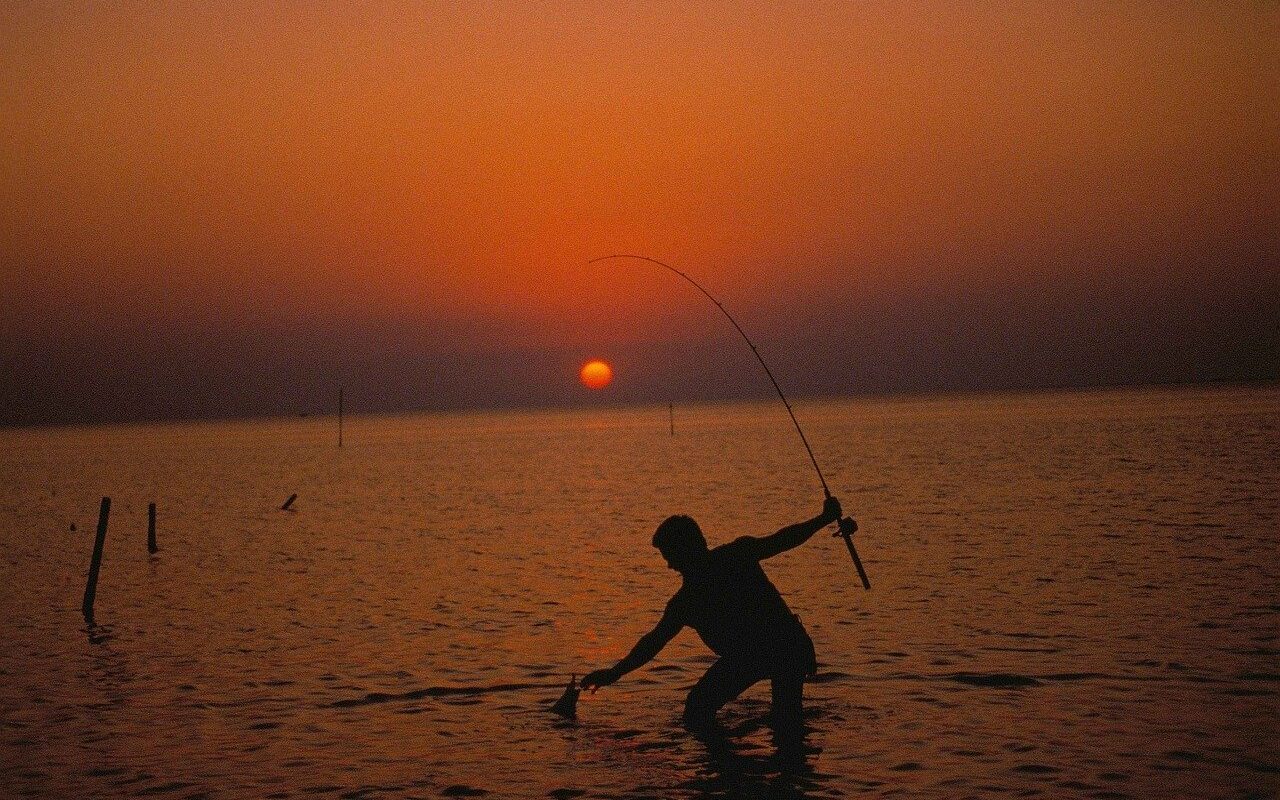A detailed analysis of the Michigan Department of Natural Resources fish harvest data points toward a healthier walleye fishery. While commercial fishing is banned from harvesting walleye, the number of recreational fishermen in Saginaw Bay fishing has dramatically dropped over the past 30 years. Is Saginaw Bay at risk of seeing a crash in walleye populations due to the lack of forage fish?

Rising Recreational Walleye Harvest
The entire fishery of Saginaw Bay’ crashed in the 1940s. In 1987 it was designated as an Area of Concern by the EPA. The region has recovered its walleye population, albeit slowly, over the last 30 years. The table below highlights the five-year recreational fishermen’s harvest averages since 1986.
| Time Period | Harvest |
| Five Year Average 1986-1990 | 93,495 lbs. |
| Five Year Average 1993-1997 | 104,405 lbs. |
| Five Year Average 2003-2007 | 150,962 lbs. |
| Five Year Average 2013-2017 | 187,025 lbs |
In comments by the DNR on the health of the bay and recovery of the species it was noted:
“The average recreational walleye harvest in Saginaw Bay over the last 5 years from 2013-2017 was 24% higher than the average recreational harvest from 2003-2007 (ten years ago) and 79% higher than the average recreational harvest from 1993-1997 (20 years ago) and over 100% higher than the average recreational harvest from 1986-1990 (28-30 years ago). The recreational walleye fisheries harvest has doubled over the last three decades as walleye populations recovered and is the best the fishery has been in a generation. The vastly improved recreational opportunities for walleye has occur along side the active commercial fishery as it has existed over the last 30 years and is not biologically threatened by the continuation of that fishery in the future.“
Saginaw Bay Recreational Walleye Harvest all sources (charter+open water rec+ice fishery)
Diminishing Perch Population
There is no better example of a crashing fishery than to look at the yields of recreational and commercial hauls for perch over the last 30 years. On the commercial side, five to eight fishermen have been harvesting from Saginaw Bay the entire time. Thus the year-to-year harvest has been fairly consistent. However, the recreational fishing take of perch has absolutely crashed.
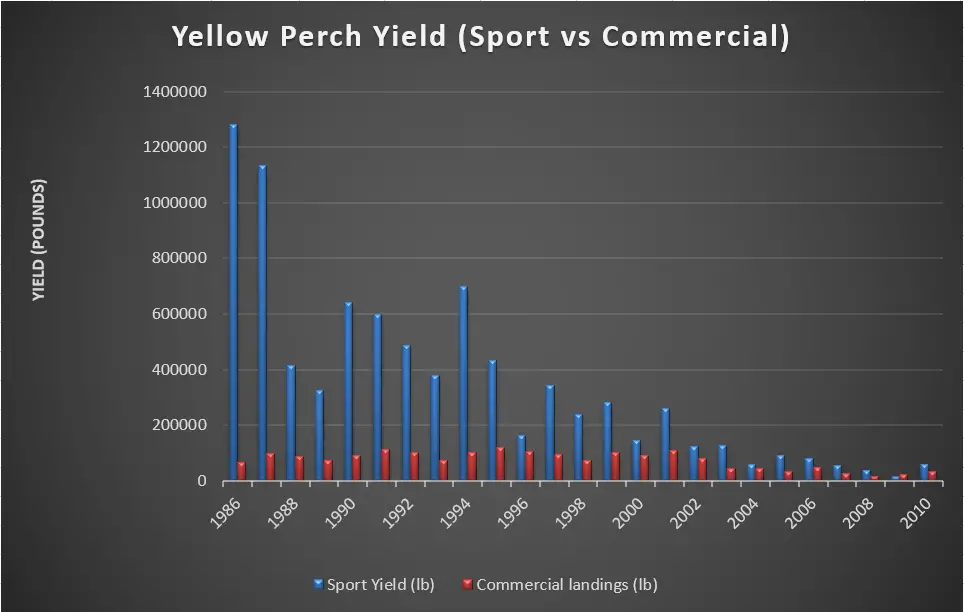
So looking at the 31 years (1986-2017) of data by the Michigan Department of Natural Resources (DNR), commercial fishing harvested 2.1 million (19%) pounds of perch while the sports fishing has taken over 9.0 million (81%) pounds of perch from Saginaw Bay.
What Happened to All the Perch?
In a Lake Huron Citizens Fishery Advisory Committee Meeting held in August 2019, the MDNR pointed out that while Yellow perch are reproducing very well, they are experiencing high mortality between ages 0 and 1. The main reason for the poor survival of juvenile yellow perch is that yellow perch are the first and favorite menu item by walleyes and other predators.
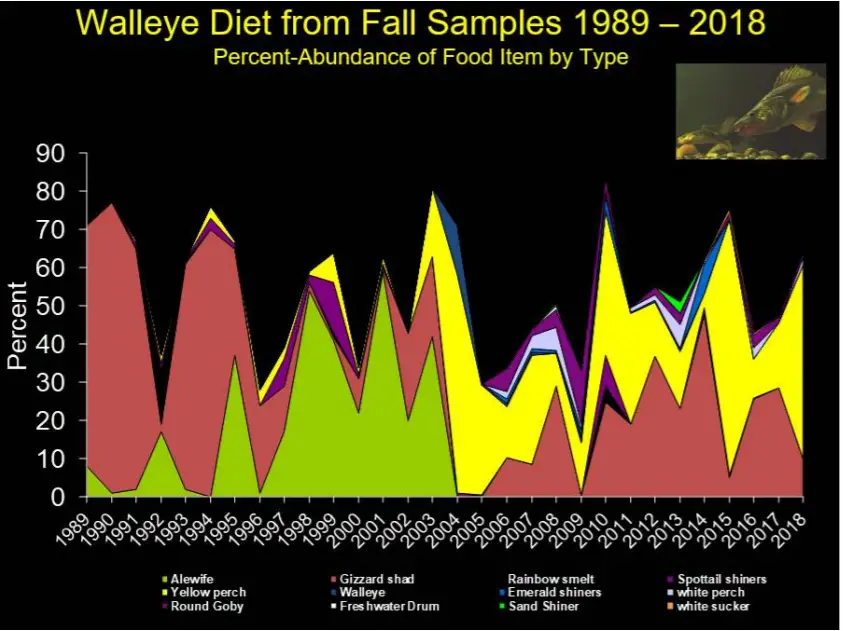
What Happened to All the Fishermen?
The MDNR has their own vocabulary when talking about recreational and commercial fishing. One bit of data that we found interesting looks to deal with the time of fishermen out fishing. They call it Fishing Effort and it’s the number of hours a sports fishermen are actually out looking for and catching fish. This Fishing Effort has declined since 1986 but leveled off about 2010.
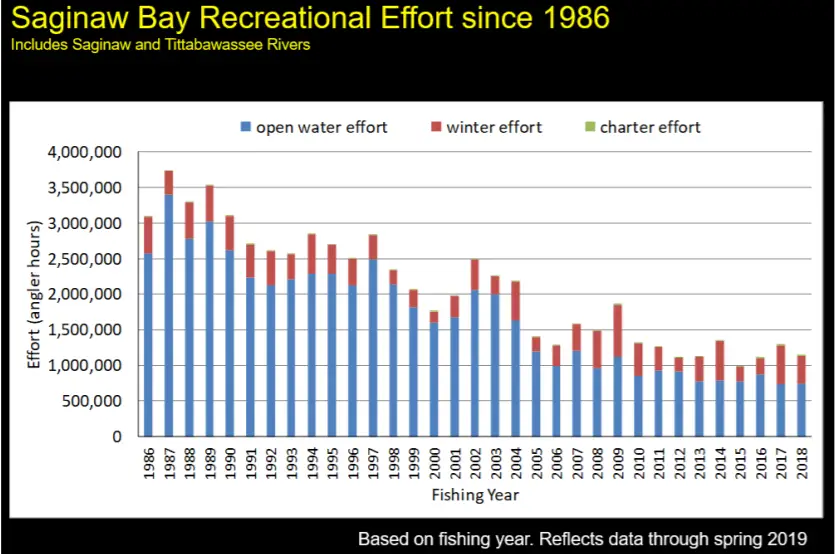
With higher walleye populations and specific size limits, it’s getting easier to catch your limit of walleye. It’s thought fishermen are catching their limit in less time. Thus its “8 in the box ” and then head back to port. However, the overall number of recreational fishermen has declined.
A study by Michigan Technological University in 2018 showed the number of Michigan residents (ages 17-79) who purchased a fishing license in the State of Michigan peaked at 965,122 in 2009. By 2014, fishing license sales had declined to 888,983. From 2013 to 2018, the number of individuals obtaining a fishing license dropped 5%. Assuming patterns from the recent past continue, the number of in-state male anglers could decrease by approximately 62,000 by 2035, to fewer than 650,000 licensed anglers, down from approximately 707,000 in 2014.
- Read More:
- Top Inland Walleye Lakes in Michigan
- Walleye Season Extended in 2022 In Saginaw River and Bay
Summary and Solutions on Saginaw Bay Fishing
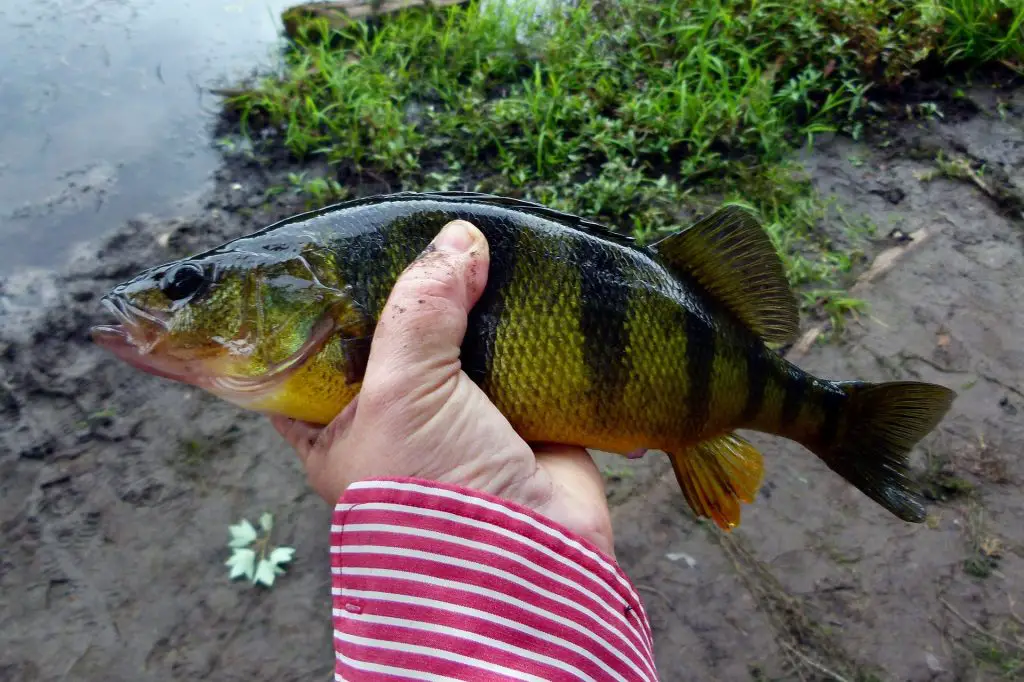
Michigan commercial fishing has a measurable but not overwhelming impact on the Saginaw Bay fishery. With five to eight licensed commercial fishermen operating in the Bay, they are not the sole reason the perch fishery has crashed. In addition, there are not enough sports fishermen, and they aren’t taking enough walleye. It’s pretty simple; less walleye, more perch. The MDNR has some real challenges. Left unchecked, the current walleye population may also crash as sources of forage fish are depleted. The MDNR may be in a situation in which to try to bring sustainability to walleye and perch populations by utilizing both commercial and sports fishing. Here are some ideas
Consider the Following
- Open the walleye season to include Saginaw River in the Spring.
- Increase the take limit and adjust size limits on recreational walleye
- Consider stocking forage fish on Saginaw Bay
- Allow commercial fishermen to harvest walleye with specific targets to assist in achieving sustainable levels of perch and walleye.
It’s also important for the MDNR to conduct a detailed census on a yearly basis in order to manage these targets. You can’t manage what you don’t measure.
Video – Giant Saginaw Bay Walleyes
Michigan DNR Subsidizes Recreational Fishing With Stocking
” class=”wp-image-13133″ width=”904″ height=”678″/>
The Michigan DNR reported that in 2019, restocking of brown trout, coho salmon, steelhead, walleye, and nine other species and one hybrid were among the 21,281,411 fish stocked in Michigan’s public waters. These fish weighed a combined total of 311 tons.
DNR staff made 449 stocking trips to 857 stocking sites, including Great Lakes, inland lakes and rivers. Eighteen specialized stocking trucks traveled 106,000 miles over the course of 2,693 hours to get the job done.
The total includes more than 3 million walleye spring fingerlings. These fish are reared in ponds by the DNR and tribal partners, with extensive support provided by local sporting organizations.
Source: Email communications: “DNR News: 21 million fish stocked, Wildlife Habitat Grants, help the hungry” Oct. 29, 2019.
Sources for Michigan Commerical Fishing
- Recreational Fishing in Michigan: Demographic Analysis – Great Lakes Research Center
- Approved Minutes – Lake Huron Citizens Fishery Advisory Committee Meeting – August 6, 2019
- Hunting is on the decline in Michigan — which is a problem. Mlive November 11, 2019
Related Reading for Saginaw Bay Fishing
- We ask a Michigan DNR Fish Biologist what happened to all the Yellow Perch. The answer was a surprise.
- There are bills pending in the Michigan Legislator that will impact commercial fishing in state waters.
- The State of Michigan’s Department of Natural Resources has a published strategy and policymaking that has effectively curtailed commercial fishing in Michigan to the brink of extinction. Michigan’s 50 Years of Curtailing Commercial Fishing
- Bay Port Fish Company has been a commercial fishery in Lake Huron and Saginaw Bay since 1895. In the owner of the company Engelhard starting selling fish sandwiches in front of his house to pay his daughter’s college tuition, his sales grew and grew until in 1978 it became The Fish Sandwich Festival. The festival still offers the original fish sandwich made from fish caught locally by the Bay Port Fish Company. The fish are cleaned by members of the Bay Port Chamber of commerce and coated in a secret batter recipe. Bay Port Fish Company on Saginaw Bay
- There it sits. A lush tree-lined island on the horizon of Saginaw Bay. Big & Little Charity Islands are ten miles from the southern shore of Saginaw Bay. Except for the seasonal residents who live and host tours at the lighthouse keepers house, the island is uninhabited and somewhat mysterious. The History of the Mysterious and Remote Charity Island
- A step by step guide on How to Make Perfectly Prepared Walleye
